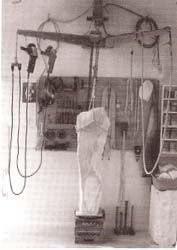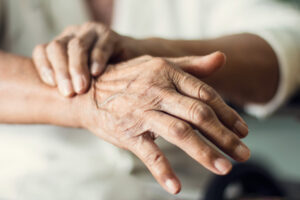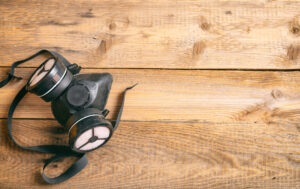Safety for Stone Carving
1. The Mental and Physical Thing:
- Is your mind clear and focused on doing your work safely?
- Are you impaired in any way?
2. Your Work Space:
- Is your workspace free of tripping hazards?
- Is there enough light to see what you are doing.
- General house keeping.
3. Personal Protective Equipment (PPE’s)
- Safety Glasses. Eye protection. Face protection.
- Hearing protection.
- Respiratory protection.
- Foot protection.
- Body protection
- Slips, trips, falls, and struck by.
- Protecting others.
4. Materials handling
- Lifting
- Securing the work piece
5. Hazards associated with the type of stone.
- Silica dust
- Asbestos
- Stone dust unknown
6. Tools
Five basic safety rules can help prevent hazards associated with the use of hand and power tools:
- Keep all tools in good condition with regular maintenance
- Use the right tool for the job
- Examine each tool for damage before use and do not use damaged tools
- Operate tools according to the manufacturers’ instructions
- Provide and use properly the right personal protective equipment.
7. Hand tools
Hand tools are tools that are powered manually. Hand tools include anything from axes to wrenches. The greatest hazards posed by hand tools result from misuse and improper maintenance.
Some examples include the following:
- If a chisel is used as a screwdriver, the tip of the chisel may break and fly off, hitting the user or other workers.
- If a wooden handle on a tool, such as a hammer or an axe, is loose, splintered, or cracked, the head of the tool may fly off and strike the user or other employees.
- If the jaws of a wrench are sprung, the wrench might slip.
- If impact tools such as chisels, wedges, or drift pins have mushroomed heads, the heads might shatter on impact, sending sharp fragments flying toward the user or other workers.
- Appropriate personal protective equipment such as safety goggles and gloves must be worn to protect against hazards that may be encountered while using hand tools.
- Workplace floors shall be kept as clean and dry as possible to prevent accidental slips with or around dangerous hand tools.
8. Power tools
Power tools must be fitted with guards and safety switches; they are extremely hazardous when used improperly. The types of power tools are determined by their power source: electric, pneumatic, liquid fuel, hydraulic, and powder-actuated. To prevent hazards associated with the use of power tools, workers should observe the following general precautions:
- Never carry a tool by the cord or hose.
- Never yank the cord or the hose to disconnect it from the receptacle.
- Keep cords and hoses away from heat, oil, and sharp edges
- Disconnect tools when not using them, before servicing and cleaning them, and when changing accessories such as blades, bits, and cutters.
- Keep all people not involved with the work at a safe distance from the work area.
- Secure work with clamps or a vise, freeing both hands to operate the tool.
Avoid accidental starting. Do not hold fingers on the switch button while carrying a plugged-in tool.
- Maintain tools with care; keep them sharp and clean for best performance.
- Follow instructions in the user’s manual for lubricating and changing accessories.
- Be sure to keep good footing and maintain good balance when operating power tools.
- Wear proper apparel for the task. Loose clothing, ties, or jewelry can become caught in moving parts.
- Remove all damaged portable electric tools from use and tag them: “Do Not Use.”
OSHA Handbook: https://www.osha.gov/sites/default/files/publications/osha3080.pdf
Stone carving involves chipping, scraping, fracturing, flaking, crushing, and pulverizing with a wide variety of tools. Soft stones can be worked with manual tools whereas hard stones require crushing and pulverizing with electric and pneumatic tools. Crushed stone can also be used in casting procedures.
- Soft stones include soapstone (steatite), serpentine, sandstone, African wonderstone, greenstone, sandstone, limestone, alabaster, and several others.
- Hard stones include granite and marble. Electric tools include saws, drills, grinders, and sanders, and pneumatic tools include rotohammers, drills, and other tools powered by compressed air.
- Stone casts can be made using Portland cement, sand, and crushed stone. Marble dust is often used with this technique. Cast concrete sculptures can also be made using sand and Portland cement.
- Lapidary involves cutting and carving semiprecious stones and has similar risks as hard stone carving. Stones carved include garnet, jasper, jade, agate, travertine, opal, turquoise and many others.
Stones can be finished by grinding, sanding, and polishing, by either hand or with machines. Polishing can use a variety of materials, depending on the hardness of the stone being polished. Polishing materials include carborundum (silicon carbide), corundum (alumina), diamond dust, pumice, putty powder (tin oxide), rouge (iron oxide), tripoli (silica), and cerium oxide.
Hazards
- Sandstone, soapstone, and granite are highly toxic by inhalation because they contain large amounts of free silica. Limestone, containing small amounts of free silica, is less hazardous.
- Serpentine, soapstone, and greenstone may contain asbestos, which can cause asbestosis, lung cancer, mesothelioma, and stomach and intestinal cancers.
- During chipping and other carving, flying chips and pieces of rock may cause eye injury. Grinding and sanding can release small pieces of stone and dust which are hazardous to the eyes.
- Lifting heavy pieces of stone may cause back injuries.
- Power tools create larger amounts of fine dust than hand tools. Pneumatic tools can create large amounts of fine silica dust
- Vibration from pneumatic equipment can cause Raynaud’s phenomenon, (“white fingers” or “dead fingers”) a circulation disease. The hazard is greater with exposure to cold, (e.g. the air blast from pneumatic tools). This temporary condition can spread to the whole hand and cause permanent damage.
- Calcium oxide in Portland cement is highly corrosive to the eyes and respiratory tract, and is moderately corrosive to the skin. Allergic dermatitis can also occur due to chromium contaminants in the cement. The silica in the cement is also highly toxic by inhalation. Lung problems from inhalation of Portland cement include emphysema, bronchitis, and fibrosis. Acrylic resins are skin irritants and sensitizers.
- The dust from quartz gemstones such as agate, amethyst, onyx, and jasper is highly toxic because they are made of silica. Other gemstones such as turquoise and garnet may be contaminated with substantial amounts of free silica. Opal is made of amorphous silica, which is slightly toxic by inhalation.
- Grinding and sanding, especially with machines can create fine dust from the stone which is being worked. There are also inhalation hazards from grinding wheel dust (especially sandstone wheels). Some polishing materials such as tripoli are highly toxic if inhaled in powder form.
Precautions
- Do not use stones which may contain asbestos unless you are certain that your particular pieces are asbestos free. New York soapstones may contain asbestos, whereas Vermont soapstones are usually asbestos free. Alabaster is a substitute.
- Wear chipping goggles to protect against flying particles; wear protective shoes to protect against falling stones. Wear approved safety goggles when grinding, sanding, or polishing. For heavy grinding also wear a face shield.
- When using carving tools, keep your hands behind the tools, and carve or cut in a direction away from you. Don’t try to catch falling tools.
- Use proper lifting techniques (bent knees).
- Protect against vibration damage from pneumatic tools by measures such as having comfortable hand grips, directing the air blast away from your hands, keeping hands warm, taking frequent work breaks, and using preventive medical measures such as massage and exercises.
- Tie long hair back, and don’t wear ties, jewelry, or loose clothing which can get caught by machinery.
Working with Stone & Lapidary:
https://ehs.princeton.edu/health-safety-the-campus-community/art-theater-safety/art-safety/sculpture#sal
Other links
Silica exposure: https://www.silica-safe.org/






